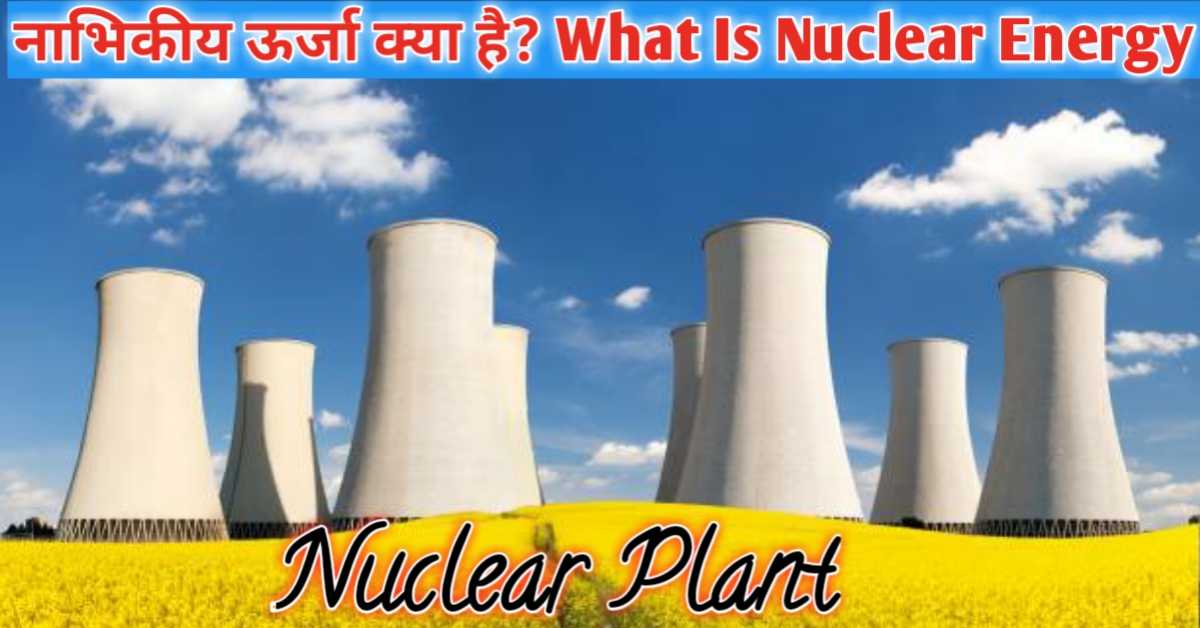
नाभिकीय ऊर्जा क्या है? | What Is Nuclear Energy?
नाभिकीय ऊर्जा (Nuclear Energy)
कुछ परमाणुओं के नाभिक में अत्यधिक मात्रा में ऊर्जा संचित रहती है। इस ऊर्जा को नाभिकीय ऊर्जा कहा जाता है। इस ऊर्जा से विद्युत का उत्पादन करने पर कार्बन डाइऑक्साइड गैस मुक्त नहीं होती। अर्थात् नाभिकीय ऊर्जा का प्रयोग करने से पर्यावरण में कार्बन डाइऑक्साइड की मात्रा नहीं बढ़ती।
The nuclei of some atoms store large amounts of energy. This energy is called nuclear energy. When electricity is produced from this energy, carbon dioxide gas is not released. That is, the use of nuclear energy does not increase the amount of carbon dioxide in the environment.
भौतिक विज्ञान के इन 👇 प्रकरणों को भी पढ़ें। (Also read these 👇 episodes of Physics.)
अच्छे ईंधन का चयन कैसे करें? | How To Choose Good Fuel?
नाभिकीय ऊर्जा निम्नलिखित दो अभिक्रियाओं में मुक्त होती है–
1. नाभिकीय संलयन
2. नाभिकीय विखण्डन।
Nuclear energy is liberated in the following two reactions–
1. Nuclear Fusion
2. Nuclear Fission.
भौतिक विज्ञान के इन 👇 प्रकरणों को भी पढ़ें। (Also read these 👇 episodes of Physics.)
ईंधन का ऊष्मीय मान या कैलोरी मान | Calorific Value Of Fuel
नाभिकीय संलयन (Nuclear Fusion)
जब दो हल्के नाभिक परस्पर संयुक्त होकर एक भारी नाभिक बनाते हैं, तो इस प्रक्रिया को नाभिकीय संलयन कहा जाता है। इस प्रक्रिया में द्रव्यमान की क्षति होती है। इससे ऊर्जा मुक्त होती है।
उदाहरण– भारी हाइड्रोजन (इयूटीरियम) के नाभिकों के संलयन से हीलियम नाभिक बनता है।
When two lighter nuclei combine to form a heavier nucleus, this process is called nuclear fusion. Mass is lost in this process. This releases energy.
Example– Helium nuclei are formed by the fusion of nuclei of heavy hydrogen (eutherium).
भौतिक विज्ञान के इन 👇 प्रकरणों को भी पढ़ें। (Also read these 👇 episodes of Physics.)
दहन और ज्वलन ताप | Combustion And Ignition Temperature
नाभिकीय विखण्डन (Nuclear Fission)
जब किसी भारी नाभिक पर न्यूट्रॉन की बमबारी की जाती है, तो वह पर्याप्त रूप से उत्तेजित हो जाता है और दो हल्के नाभिकों में विभक्त हो जाता है। इस प्रक्रिया को नाभिकीय विखण्डन कहा जाता है। इसके फलस्वरूप अत्यधिक मात्रा में ऊर्जा मुक्त होती है।
उदाहरण– जब मन्दगामी न्यूट्रॉन यूरेनियम (परमाणु भार 235) से टकराता है, तो यूरेनियम का नाभिक न्यूट्रॉन को अवशोषित करके उत्तेजित अवस्था में पहुँच जाता है। इससे यूरेनियम का उत्तेजित नाभिक दो हल्के नाभिकों में विभक्त हो जाता है।
When a heavy nucleus is bombarded with neutrons, it gets sufficiently excited and splits into two lighter nuclei. This process is called nuclear fission. As a result a large amount of energy is released.
Example– When a slowing neutron collides with uranium (atomic mass 235), the nucleus of uranium absorbs the neutron and reaches an excited state. This causes the excited nucleus of uranium to split into two lighter nuclei.
भौतिक विज्ञान के इन 👇 प्रकरणों को भी पढ़ें। (Also read these 👇 episodes of Physics.)
द्रव पेट्रोलियम गैस | Liquefied Petroleum Gas (LPG)
भौतिक विज्ञान के इन 👇 प्रकरणों को भी पढ़ें। (Also read these 👇 episodes of Physics.)
1. पेट्रोलियम परिष्करण का प्रभाजी आसवन | Fractional Distillation Of Petroleum Refining
2. सम्पीडित प्राकृतिक गैस | Compressed Natural Gas (CNG)
3. मानव जीवन में ऊर्जा स्त्रोतों का महत्व | Importance Of Energy Sources In Human Life
4. अनवीकरणीय और नवीकरणीय ऊर्जा स्त्रोत | Non-renewable And Renewable Energy Sources
5. जीवाश्म ईंधन क्या है? | What Is Fossil Fuel?
6. कोयला क्या है? | कोयले के प्रकार || What Is Coal? | Types Of Coal
7. पेट्रोलियम क्या है? | What Is Petroleum?
रसायन विज्ञान के इन 👇 प्रकरणों को भी पढ़ें। (Also read these 👇 episodes of Chemistry.)
1. क्रिस्टलन का जल– जिप्सम और प्लास्टर ऑफ पेरिस | Water Of Crystallisation– Gypsum And Plaster Of Paris
2. धातुएँ– भौतिक गुणधर्म | Metals– Physical Properties
3. धातुओं और अधातुओं से संबंधित तथ्य | Facts About Metals And Non-Metals
4. धातुओं की अम्ल, क्षारक और ऑक्सीजन के साथ अभिक्रिया | Reaction Of Metals With Acids, Bases And Oxygen
5. धातुओं की जल के साथ रासायनिक अभिक्रियाएँ | Chemical Reactions Of Metals With Water
आशा है, उपरोक्त जानकारी उपयोगी एवं महत्वपूर्ण होगी।
(I hope the above information will be useful and important. )
Thank you.
R. F. Tembhre
(Teacher)
pragyaab.com




Comments